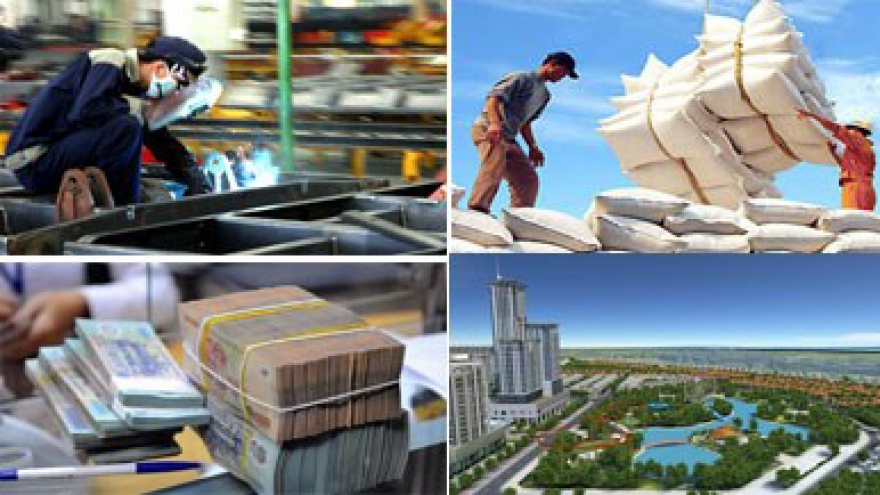Independent Assessment of Vietnam’s Macroeconomic Policies
VOV.VN - The Vietnam Institute for Economic and Policy Research (VEPR) and the Konrad Adenauer Foundation (KAS) on January 16 co-hosted a workshop in Hanoi to unveil the Quarterly Report (IV) – Independent Assessment of Vietnam’s Macroeconomic Policies.
 |
At the event attended by numerous senior economic experts, VERP President Nguyen Duc Thanh briefed participants on the world and Vietnam's quarterly macroeconomic report.
The world economy in Q4 and in 2017 witnessed steady growth. The US economy continued to expand despite the impact of two major hurricanes (Harvey and Irma), which led to the Fed’s decision to hike interest rates in December. The EU’s economy recovered rapidly, with the highest growth rate in recent years, whilst the UK lost its position as the world’s fifth largest economy.
In Asia, Japan continued to face labor shortages as well as population decline. The Chinese economy experienced slightly lower growth following the introduction of government controls on the property market and debt risks. ASEAN economies maintained their impressive growth, while BRICS countries also saw signs of an economic rebound.
After an abnormal Q3, the Vietnamese economy posted an even more impressive growth rate of 7.65%, fueling 2017’s overall growth rate of 6.81%, which surpassed the National Assembly’s target of 6.7%. Agriculture, forestry and fishery, and service sectors improved greatly compared to previous years.
The number of foreign visitors set a record at nearly 13 million, contributing to the recovery of the service sector. The manufacturing sector witnessed tremendous growth at 14.4%, becoming the driving force for the whole industry sector despite the downturn in the mining and quarrying sub-sector due to restructuring. All industrial production indicators showed growth in Q4.
The number of jobs created and newly established firms increased considerably again in Q4. CPI remained stable, only increasing by 2.6% in December, while the inflation rate for 2017 was 3.53%, fulfilling the target of not exceeding 4% as set by the National Assembly.
Trade balance saw a surplus of US$ 3 billion in Q4. Annual trade turnover in 2017 reached US$400 billion for the first time in history. Turnover in both exports and imports boasted impressive growth rates of more than 20%. The total trade surplus in 2017 was reported as US$2.7 billion.
The Republic of Korea is replacing China as the country with the highest deficit among Vietnam’s trading partners.
Total investment capital grew steadily by 12.7% in Q4. Private sector investment witnessed the strongest growth rate among the three sectors of the economy in both Q4 (17.7%) and over the whole year (16.8%).
Credit growth rate was 16.96% to December 20. This rate did not meet the Government’s target of 21%. Liquidity remained abundant in the banking system this year as the State Bank of Vietnam injected a large amount of VND into the economy but not (intentionally) strictly sterilized. Total foreign exchange reserves reached US$51.5 billion by the end of 2017.
In the real estate market, transactions and the number of new apartments for sale increased significantly in both Hanoi and Ho Chi Minh City. The end of year boom in market supply may signal a decline in property prices on the horizon.
Dr. Le Dang Doanh, former president of CIEM highlighted 2018 as a challenging year for Vietnam as the country will implement a series of Free Trade Agreements (FTAs) this year. Most of the goods covered in the agreements will enjoy a zero percent import tariff from January 1, 2018, in line with the country’s commitments within the framework of the FTAs, which will impact upon the state budget collections.
At the workshop, economic experts also touched upon key issues pertaining to the business climate and changes to institutions and policies in support of domestic businesses, especially small and medium-sized enterprises (SMEs), as well as the importance of the application of science and advanced technologies, and the Fourth Industrial Revolution.


